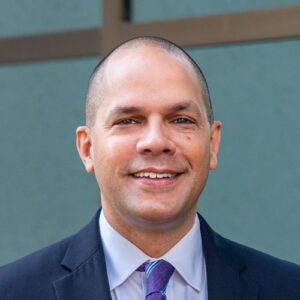Wise & Siddiqi: With COVID Relief Funds, States & Districts Can Remake Public Education for the Better. Congress Should Give Them More Time to Make It Happen

Get stories like this delivered straight to your inbox. Sign up for The 74 Newsletter
With the last of three COVID relief spending bills enacted in March 2021, nearly $200 billion for elementary and secondary schools and $350 billion for state and local governments have been made available for transformational changes in education. Now, one year later, many beleaguered state and local policymakers are concerned that even a September 2024 deadline for education systems to spend federal funding to spur COVID improvement projects doesn’t provide them with the time they need to take bold action to make transformational change.
Moreover, recent congressional action confirms that there will be no more massive federal funding increases for education. While the $1.5 trillion spending bill that just passed Congress boasts increases for supporting low-income students such as $1 billion for Title I, this is a small amount — a mere 6 percent increase — compared with the original proposal to more than double Title I.
It is clear that the only way for education systems to move from triage to transformation is by leveraging already allocated federal relief dollars. That is why we urge Congress to extend the deadline to spend Elementary and Secondary School Emergency Relief (ESSER) funds to allow states and districts adequate time for planning long-term improvements in schools. Others share this sentiment, as over 30 organizations signed a letter to U.S. Education Secretary Miguel Cardona in January requesting a deadline extension through December 2026.
We’ve heard time and time again that this infusion of federal dollars into education systems across the country is a once-in-a-lifetime opportunity. That means this is the only chance education leaders and state and local policymakers have to take bold action. This can include advocating for policies that support whole-child approaches to education, such as developing a personalized learning environment for each student and incorporating job skills training in schools — two major priorities we have heard from parents and voters in our work with an initiative we’re calling The COVID Constituency. Such policies include:
- Leverage public, private and social service sectors to expand essential broadband access to every community. Through virtual learning, video meetings, telehealth appointments and remote work, households have utilized technology in new ways to meet their needs. Yet there continue to be digital access gaps across states. A major step toward addressing this priority is for states and districts to consider long-term partnerships using federal relief dollars and the additional $65 billion earmarked for improving broadband access and digital equity in the federal infrastructure bill that passed in November.
- Providing wraparound services for students and families. As a way of providing a single point of delivery for greater academic and social support services, especially for low-income families, schools can collaborate with local partners to adopt a community school model. This redesign provides expanded education opportunities and social services and is shown to improve student outcomes with a significant return on investment for every dollar spent.
- Promoting workforce training opportunities in schools. With an evolving labor market and workforce needs, students must have the skills to succeed in a changing economy. Given the broad flexibility in how federal relief dollars are being used, many states are taking advantage of these funds to invest in workforce training opportunities such as apprenticeships and career and technical education.
- Coordinating planning between education leaders and policymakers to better target funding efforts. For example, the $350 billion for state and local governments can be used to support workforce training and address students’ social, emotional and mental health needs. These funds can be leveraged in combination with the $200 billion in ESSER funds for K-12 schools to make an even greater impact.
For almost two years, the American public has been involved in the greatest shared experience since World War II. During this global crisis, education leaders, state and local policymakers and community members have been focused on keeping their schools and communities afloat. Now, they should be afforded a longer timeline to thoughtfully reimagine education for the long term. The boldest move would be for them to redesign their schools for what children and youth need, not what they had, and that takes shared sacrifice, public support, available resources – and more time for meaningful planning from Congress.
Bob Wise is former West Virginia governor (2001-05), U.S. representative (1983-2001) and education nonprofit leader. He currently heads Bob Wise LLC, an education consulting firm. Dr. Javaid Siddiqi is president and CEO of The Hunt Institute.
Get stories like these delivered straight to your inbox. Sign up for The 74 Newsletter

;)

